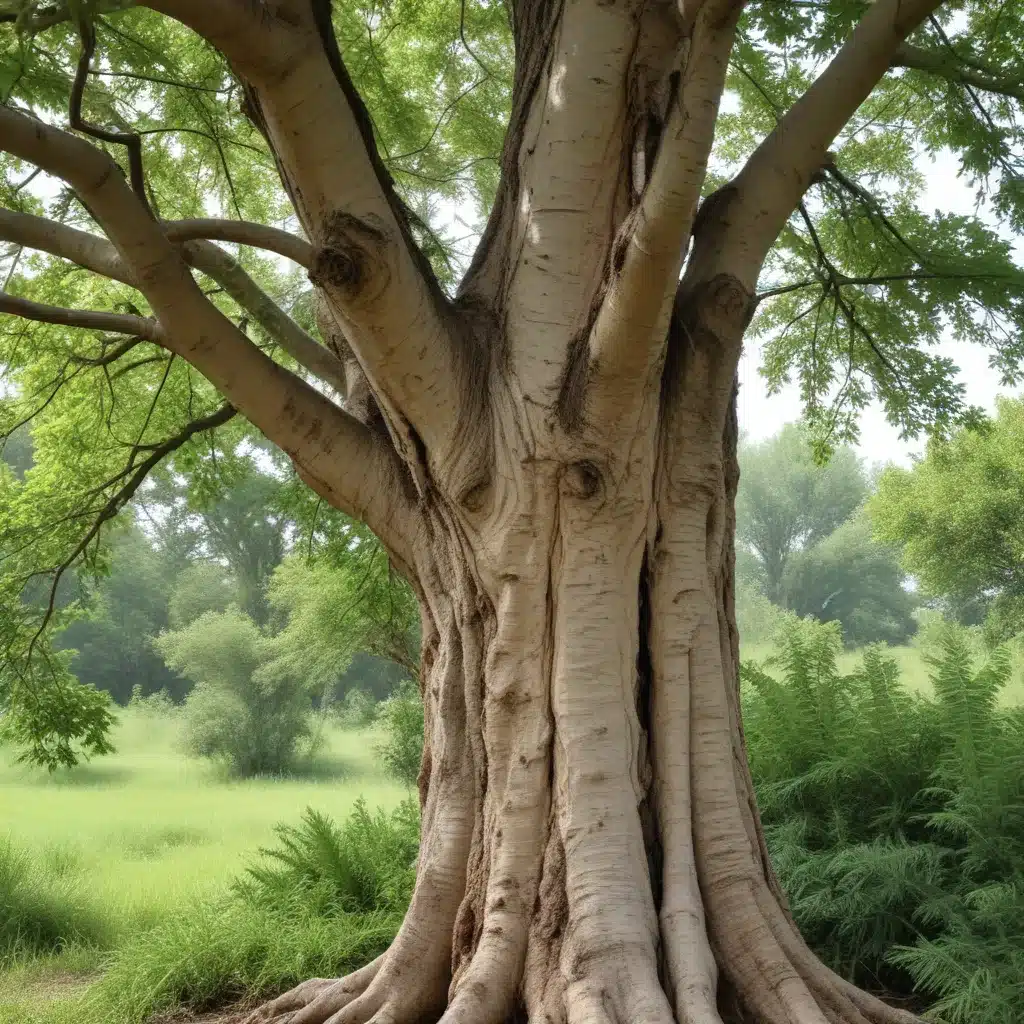
As a leading tree care specialist at TriCounty Tree Care, I’m often asked how to revive trees that have been damaged by natural disasters or other emergencies. The good news is that with the right approach, many trees can be restored to full vitality and vigor, even after severe setbacks. In this comprehensive guide, I’ll share expert insights on the key factors affecting tree health, proven strategies for addressing tree damage, and the importance of proactive care and maintenance.
Tree Vitality and Vigor
A tree’s overall vitality and vigor are crucial indicators of its well-being and ability to thrive. Vitality refers to the tree’s general health and life force, while vigor speaks to its capacity for growth, resilience, and ability to withstand stressors.
Factors Affecting Tree Vitality
Several interconnected factors can impact a tree’s vitality, including environmental conditions, soil quality, nutrient availability, and the presence of pests or diseases. Extreme weather events, such as storms, droughts, or freezes, can also severely compromise a tree’s health and vigor.
Indicators of Tree Vigor
Visible signs of a tree’s vigor include lush, vibrant foliage; robust, upright branch growth; and the ability to quickly recover from damage or stress. The tree’s bark texture, root system development, and overall structural integrity are also important markers of its vigor.
Restoration Strategies for Healthy Trees
Restoring a damaged or distressed tree to optimal health often requires a multifaceted approach. This may involve pruning to remove dead or compromised branches, amending the soil to address nutrient deficiencies, implementing integrated pest management (IPM) strategies, and providing consistent, targeted care over an extended period.
Calamities and Emergencies
Natural disasters and other unforeseen events can wreak havoc on even the most well-established trees, causing a range of physical and physiological damage.
Natural Disasters and their Impacts
Severe storms, floods, wildfires, and other natural calamities can lead to broken limbs, uprooted trunks, scorched foliage, and disrupted root systems. The extent of the damage will depend on factors like the tree species, its age and overall condition, and the intensity of the event.
Human-Caused Disturbances
Trees can also suffer from various human-induced emergencies, such as construction projects, vehicle collisions, or even vandalism. These incidents can result in physical trauma, soil compaction, and disruption to the tree’s delicate balance.
Identifying and Addressing Tree Damage
Carefully assessing the nature and severity of the damage is the first step in restoring a tree’s vitality. This may involve a comprehensive evaluation by a certified arborist, who can recommend the most appropriate course of action, whether it’s pruning, soil remediation, or, in extreme cases, complete removal and replacement.
Tree Care and Maintenance
Proactive care and maintenance are essential for helping trees recover from calamities and emergencies, as well as maintaining their long-term health and vigor.
Pruning and Trimming
Proper pruning techniques are crucial for removing damaged or diseased branches, promoting balanced growth, and allowing for better light and air circulation. It’s important to time these interventions carefully, as the dormant season is typically the best time for major pruning.
Soil and Nutrient Management
Assessing and addressing soil quality and nutrient imbalances can significantly boost a tree’s ability to recover and thrive. This may involve soil testing, the application of appropriate fertilizers or amendments, and the incorporation of organic matter to improve soil structure and fertility.
Hazard Tree Removal
In some cases, a tree may be so severely damaged that it poses a safety risk and requires complete removal. A certified arborist can make this determination and guide the process, ensuring the safe and responsible disposal of the tree.
Pest and Disease Management
Pests and diseases can further exacerbate the challenges faced by trees after a calamity or emergency, making comprehensive pest and disease management a crucial component of the restoration process.
Pest Identification and Control
Recognizing and properly identifying common tree pests, such as bark beetles, aphids, or defoliating insects, is the first step in implementing effective control measures. An integrated pest management (IPM) approach, combining biological, cultural, and, if necessary, targeted chemical methods, can help mitigate these threats.
Disease Diagnosis and Treatment
Similarly, early detection and accurate diagnosis of tree diseases, ranging from fungal infections to bacterial cankers, is essential for developing an appropriate treatment plan. This may involve the application of fungicides, the removal of affected tissues, or the implementation of cultural practices to improve the tree’s overall health and resilience.
Community Engagement and Education
Restoring tree vitality and vigor after calamities and emergencies is not just a technical challenge; it also requires collaboration and education within the local community.
Stakeholder Collaboration
Engaging homeowners, landowners, and local authorities in the tree restoration process is crucial for ensuring the long-term success of these efforts. By fostering partnerships and open communication, we can coordinate our efforts, share resources, and promote a shared understanding of the importance of tree care.
Public Outreach and Education
Educating the community about the benefits of healthy trees, the warning signs of distress, and the best practices for tree care and maintenance can empower residents to become active stewards of their local urban and suburban forests. TriCounty Tree Care offers a range of informational resources, workshops, and community outreach programs to support this vital work.
In conclusion, restoring tree vitality and vigor after calamities and emergencies requires a comprehensive, science-based approach that addresses the multifaceted needs of trees. By combining expert arboricultural knowledge, proactive care and maintenance, and collaborative community engagement, we can help the trees in our communities not just survive, but thrive, even in the face of adversity. To learn more about our services, please visit TriCounty Tree Care.


